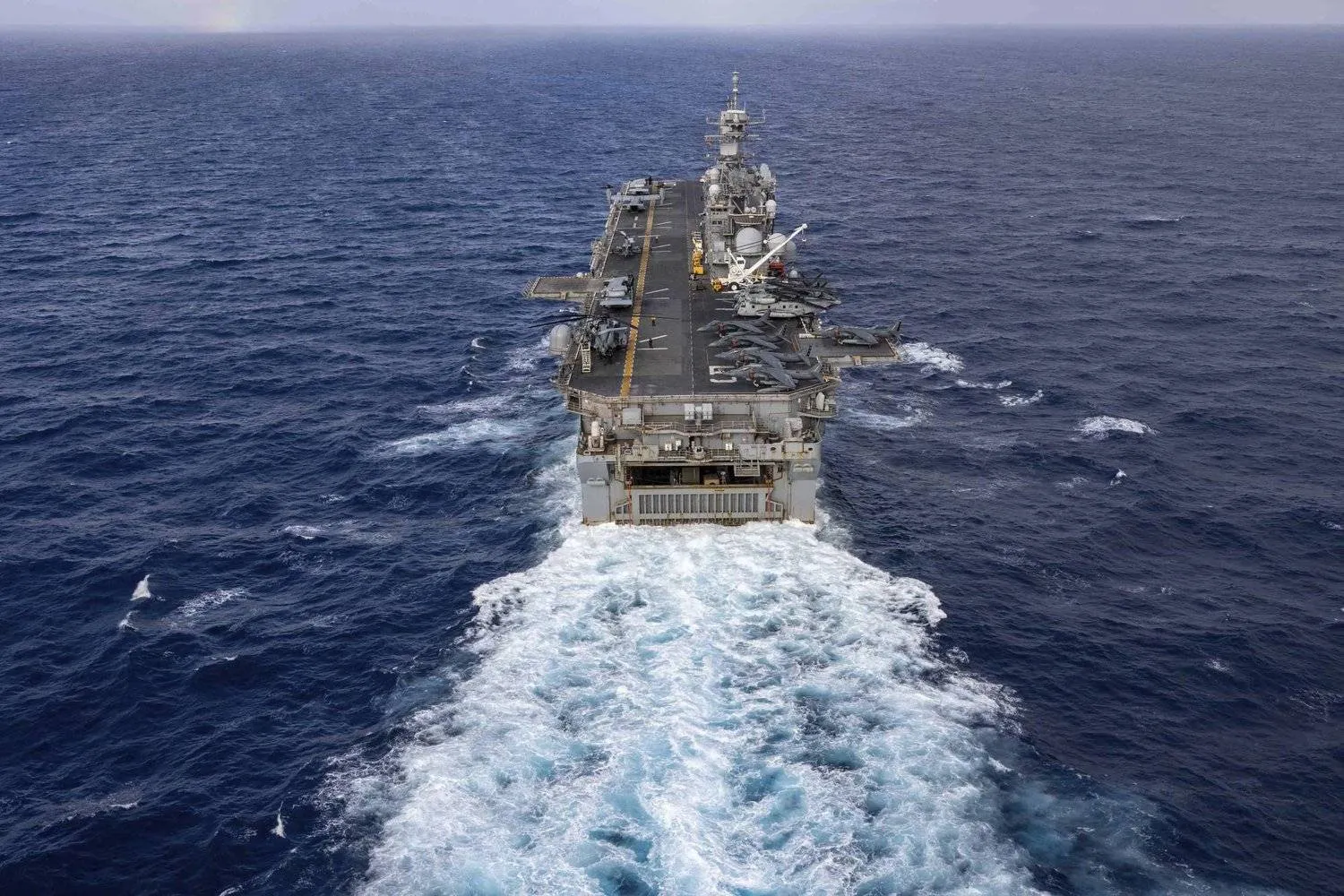A recent analysis by The Associated Press (AP) said that the United States was strengthening its presence in the Arab Gulf, by deploying thousands of Marines and advanced US fighter jets and warships, in a sign of a worsening conflict with Iran over its nuclear program.
According to the report, the dispatch of the troop-and-aircraft-carrying USS Bataan to the Gulf, alongside stealth F-35 fighters and other warplanes, comes as America wants to focus on China and Russia.
At the same time, it noted that Washington sees that while it is easy to engage militarily into the Middle East, it is difficult to get out of the region completely, especially as Iran continues to enrich uranium, closer than ever to weapons-grade levels after the collapse of its 2015 nuclear deal with world powers.
According to the AP report, there is no indication that diplomacy will soon revive the agreement, as Iran has in recent weeks resumed harassing and seizing ships trying to pass through the Strait of Hormuz, where about 20 percent of the world’s oil is transported through the narrow waterway linking the Arabian Gulf to the rest of the world.
The report also noted that for the US, keeping the Strait of Hormuz open to shipping was a priority to prevent to spike of global energy prices, amid pressure markets resulting from the Russia-Ukraine war. In parallel, Gulf Arab nations need the waterway to get their oil to market and worry about Iran’s intentions in the wider region.
In recent months, the US military has begun strengthening its presence in the Middle East, the AP said. It conducted a Strait of Hormuz patrol with the top US, British and French naval commanders in the region on board.
The report added that in late March, A-10 Thunderbolt II warplanes arrived at Al Dhafra Air Base in the United Arab Emirates. The Pentagon ordered F-16 fighters, as well as the destroyer USS Thomas Hudner, to the region. Stealth F-35A Lightning II fighter jets also arrived last week.
According to the AP analysis, America will have part of a Marine expeditionary unit in the region for the first time in nearly two years. The deployment of thousands of Marines and sailors consists of both the USS Bataan and the USS Carter Hall, a landing ship.
While the US military has not discussed precisely what it will do with the increased presence in the region, these moves have caught Iran’s attention. In recent days, Iranian Foreign Minister Hossein Amir-Abdollahian called his counterparts in Kuwait and the UAE to tell them: “We can achieve peace, stability and progress in the region without the presence of foreigners.”
Moreover, Iran’s army commander, General Abdolrahim Mousavi, said the US deployment would bring only “insecurity and damage” to the region.
With diplomacy stalled and Iran preparing to be more aggressive at sea, the United States appears once again to be relying on military force to persuade Tehran to back down. But that leaves the rest of the issues between them outside the seas to continue to fester, the AP report underlined.









